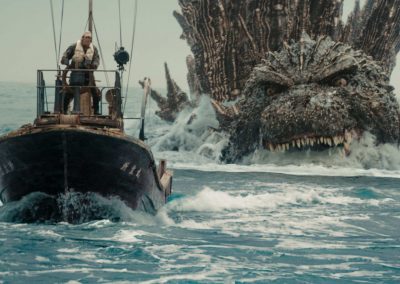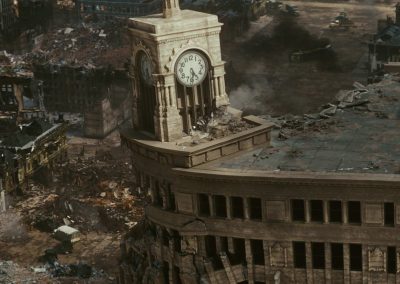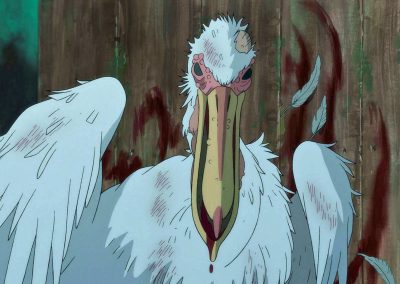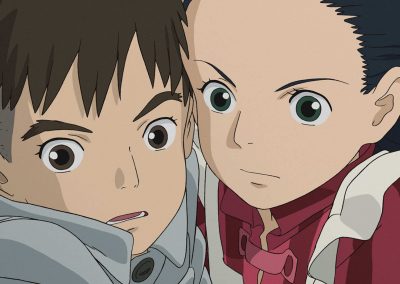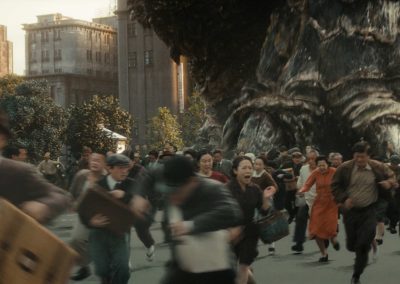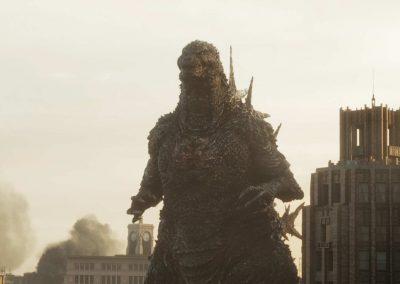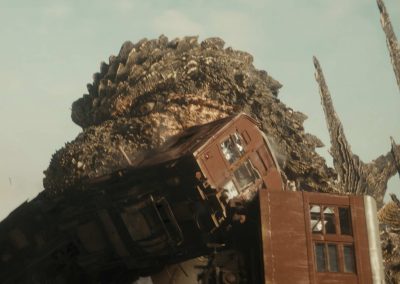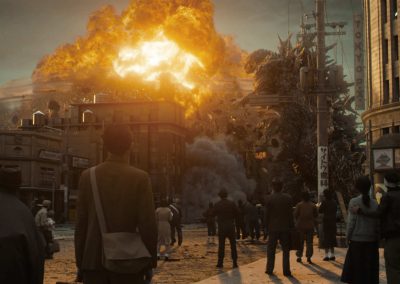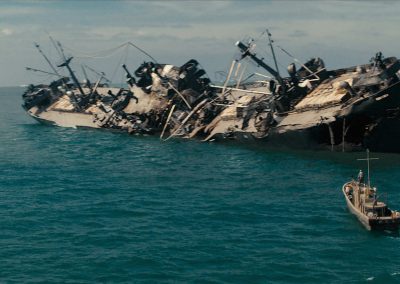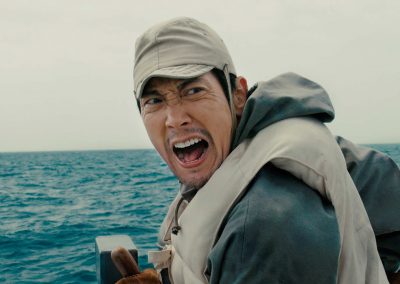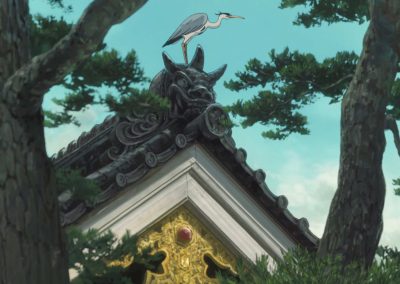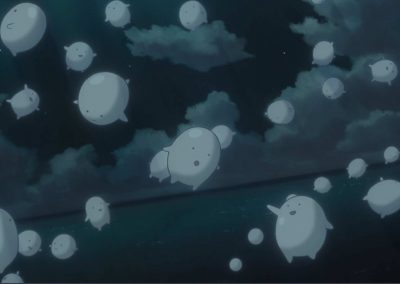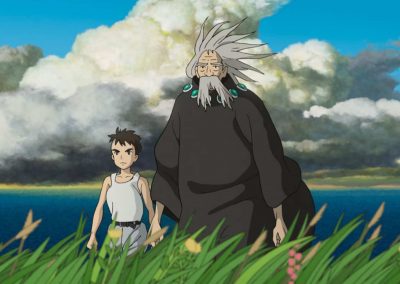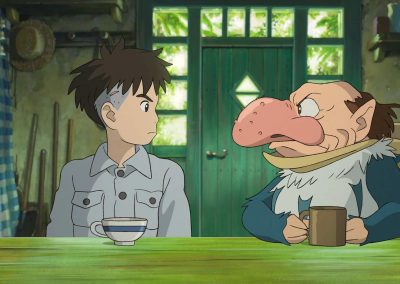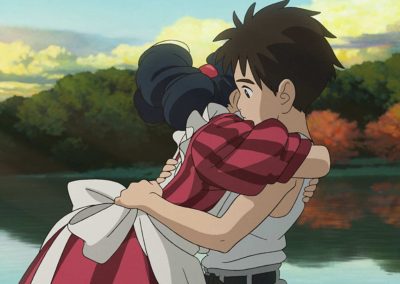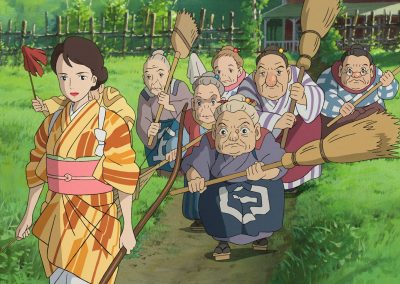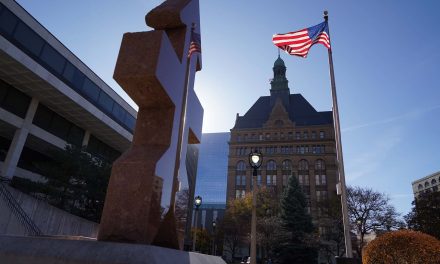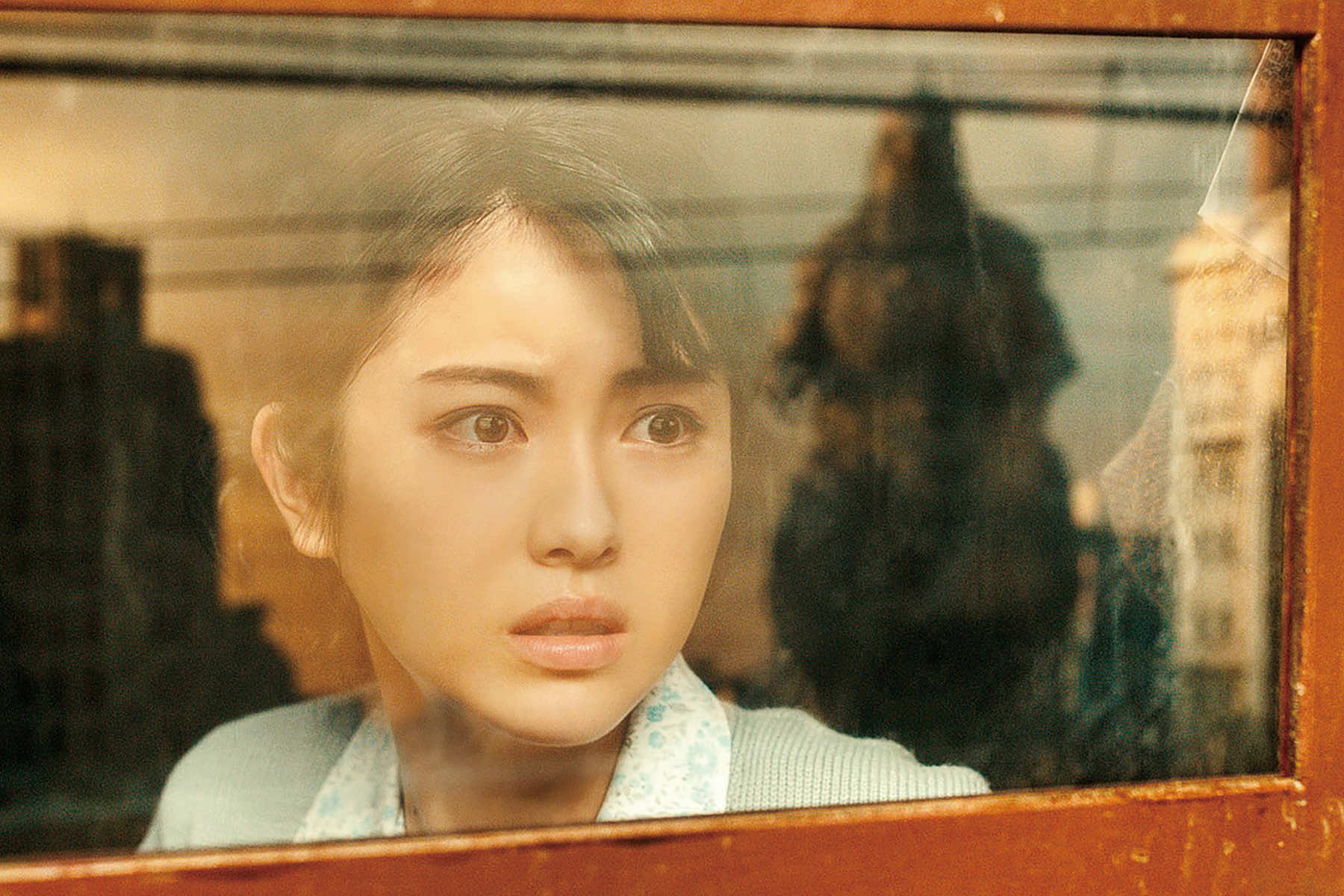
The 2024 Oscars showcased the creativity and storytelling skill of Japanese cinema, with unprecedented wins for two of its most iconic figures: Hayao Miyazaki and the legendary kaiju, Godzilla.
Hayao Miyazaki won for helming the best animated film “The Boy and the Heron,” the long-awaited fantasy from the director of “Spirited Away,” “My Neighbor Totoro,” and “Kiki’s Delivery Service.” It was the second career Oscar for the legendary Japanese filmmaker, who has enchanted fans around the world for decades with Anime classics.
“My wife tells me that I’m a very lucky man,” Miyazaki said in his acceptance speech through a translator. “And I think I’ve been lucky because I’ve been able to participate in the last era when we can make films with paper, pencil, and film.”
It was only the second time a hand-drawn animation film had won in the category. The first, 21 years ago, was Miyazaki’s “Spirited Away,” his first-ever Oscar. It was also Miyazaki’s fourth Oscar nomination for best animated feature, tying with Pixar’s Pete Docter in that category.
At 83, Miyazaki is the oldest director ever nominated for the category and the oldest winner by more than two decades, adding to a big year in Hollywood for older filmmakers.
Miyazaki began work on “The Boy and the Heron” not long after announcing in 2013 that he intended to retire from film … again. In journal excerpts from around that time, released in the film’s press notes, Miyazaki wrote:
“There’s nothing more pathetic than telling the world you’ll retire because of your age, then making yet another comeback. Doesn’t an elderly person deluding themself that they’re still capable, despite their geriatric forgetfulness, prove that they’re past their best? You bet it does.” – Hayao Miyazaki
Another movie titan was finally recognized with Oscar glory after 70 years, when writer-director Takashi Yamazaki’s “Godzilla Minus One” won for best visual effects. Some 610 effects shots were created by Yamazaki, who also served as effects supervisor, and his small team of artists. Lacking the budget for hydraulics, the crew would shake a boat set to mimic ocean bobbing or rotate a cockpit to simulate flying.
Set in the waning days of World War II, “Godzilla Minus One” marked the first time in the franchise’s history that the prehistoric reptilian monster was nominated for an Oscar. It is the 37th film in the film series, which usually uses Godzilla as a sober symbol of nuclear holocaust and atomic trauma.
Yamazaki noted that both he and Christopher Nolan, with the epic “Oppenheimer,” were separately drawn back to the nuclear era in their moviemaking.
“The world, in some sense, has forgotten the implications, the impact, the ramifications of what a nuclear war could entail,” Yamazaki said.
America’s fascination with Japanese cinema began in the post-war years of the 1950s, notably through the lens of Akira Kurosawa’s work. The director gained attention from groundbreaking storytelling, profound cultural narratives, and cinematic innovations.
Kurosawa’s masterpieces such as “Seven Samurai,” “Rashomon,” and “Ikiru” showcased complex human emotions, interwoven with philosophical depth. He also introduced a narrative style that transcended cultural and language barriers, like his approach in “Rashomon.” The film used a unique perspective of the same event from different viewpoints, challenging viewers worldwide to rethink the nature of truth and reality.
3.11 Exploring Fukushima
- Journey to Japan: A photojournalist’s diary from the ruins of Tōhoku 13 years later
- Timeline of Tragedy: A look back at the long struggle since Fukushima's 2011 triple disaster
- New Year's Aftershock: Memories of Fukushima fuels concern for recovery in Noto Peninsula
- Lessons for future generations: Memorial Museum in Futaba marks 13 years since 3.11 Disaster
- In Silence and Solidarity: Japan Remembers the thousands lost to earthquake and tsunami in 2011
- Fukushima's Legacy: Condition of melted nuclear reactors still unclear 13 years after disaster
- Seafood Safety: Profits surge as Japanese consumers rally behind Fukushima's fishing industry
- Radioactive Waste: IAEA confirms water discharge from ruined nuclear plant meets safety standards
- Technical Hurdles for TEPCO: Critics question 2051 deadline for decommissioning Fukushima
- In the shadow of silence: Exploring Fukushima's abandoned lands that remain frozen in time
- Spiral Staircase of Life: Tōhoku museums preserve echoes of March 11 for future generations
- Retracing Our Steps: A review of the project that documented nuclear refugees returning home
- Noriko Abe: Continuing a family legacy of hospitality to guide Minamisanriku's recovery
- Voices of Kataribe: Storytellers share personal accounts of earthquake and tsunami in Tōhoku
- Moai of Minamisanriku: How a bond with Chile forged a learning hub for disaster preparedness
- Focus on the Future: Futaba Project aims to rebuild dreams and repopulate its community
- Junko Yagi: Pioneering a grassroots revival of local businesses in rural Onagawa
- Diving into darkness: The story of Yasuo Takamatsu's search for his missing wife
- Solace and Sake: Chūson-ji Temple and Sekinoichi Shuzo share centuries of tradition in Iwate
- Heartbeat of Miyagi: Community center offers space to engage with Sendai's unyielding spirit
- Unseen Scars: Survivors in Tōhoku reflect on more than a decade of trauma, recovery, and hope
- Running into history: The day Milwaukee Independent stumbled upon a marathon in Tokyo
- Roman Kashpur: Ukrainian war hero conquers Tokyo Marathon 2024 with prosthetic leg
- From Rails to Roads: BRT offers flexible transit solutions for disaster-struck communities
- From Snow to Sakura: Japan’s cherry blossom season feels economic impact of climate change
- Potholes on the Manga Road: Ishinomaki and Kamakura navigate the challenges of anime tourism
- The Ako Incident: Honoring the 47 Ronin’s legendary samurai loyalty at Sengakuji Temple
- "Shōgun" Reimagined: Ambitious TV series updates epic historical drama about feudal Japan
- Enchanting Hollywood: Japanese cinema celebrates Oscar wins by Hayao Miyazaki and Godzilla
- Toxic Tourists: Geisha District in Kyoto cracks down on over-zealous visitors with new rules
- Medieval Healing: "The Tale of Genji" offers insight into mysteries of Japanese medicine
- Aesthetic of Wabi-Sabi: Finding beauty and harmony in the unfinished and imperfect
- Riken Yamamoto: Japanese architect wins Pritzker Prize for community-centric designs
Mark Kennedy, Rio Yamat, and MI Staff (Japan)
Toho Studios, Studio Ghibli, Ashley Landis (AP), Chris Pizzello (Invision via AP)
3.11 Exploring Fukushima: The Tōhoku region of Japan experienced one of the worst natural disasters ever recorded when a powerful earthquake was followed by a massive tsunami, and triggered an unprecedented nuclear crisis in 2011. With a personal connection to the tragedies, Milwaukee Independent returned for the first time in 13 years to attend events commemorating the March 11 anniversary. The purpose of the journalism project included interviews with survivors about their challenges over the past decade, reviews of rebuilt cities that had been washed away by the ocean, and visits to newly opened areas that had been left barren by radiation. This special editorial series offers a detailed look at a situation that will continue to have a daily global impact for generations. mkeind.com/exploringfukushima

